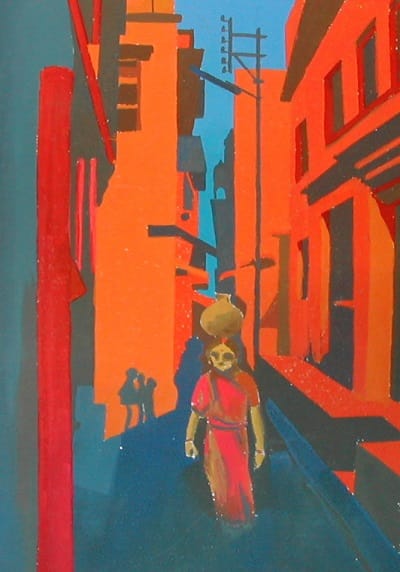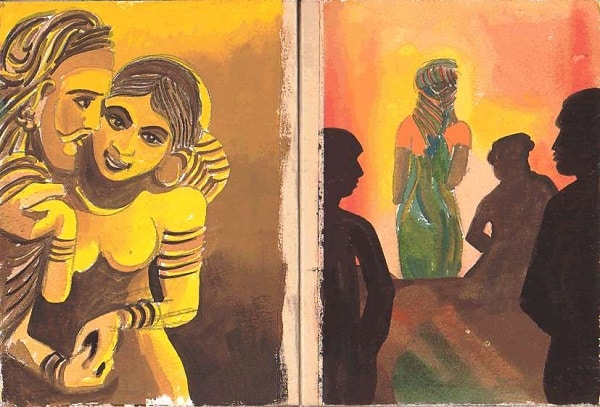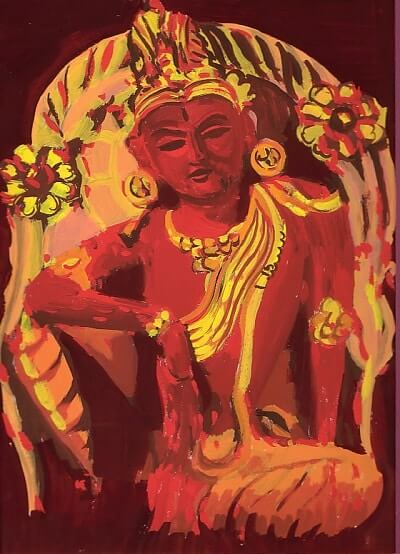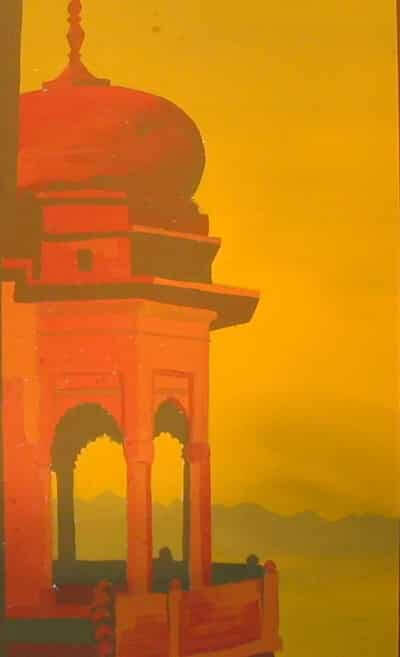When Peter Friedlander returned home to the UK after his travels through India in the late 1970s and early ‘80s, he carried his mandatory photographs and slides.
He also took back a number of works of art that he had created as he sketched his way through the country.
“I thought it was a good opportunity to draw and paint the world around me. I’d carry my sketchbook and sit down, and people would gather around and talk.”
They would ask what he was drawing, and he wished he could speak their language.
And so began a lifelong love affair with Hindi, and indeed, the foundations of his professional life.
(Today Peter teaches Hindi and Urdu at the Australian National University.)
He tells Indian Link as he describes one of his pieces created at the Kullu Manali valley, “I was doing a sketch of cows as some kids came over to chat. I couldn’t understand a word of what they were saying, but I wrote the words ‘boto cha’ at the margins of the piece. It occurred to me years later that they were saying ‘Bahut achcha’, very good!”
He also found the Hindi script fascinating and would reproduce in his sketchbook what he saw: one of his artworks reads Gehoon yahan pisa in the script (a fragment of a sentence that would probably have finished with …jata hai).
But it is the pieces from Varanasi, a city for which Peter clearly has a soft spot, that gets him most animated. Describing his paintings of lazy water buffaloes, he recalls, “There’s a whole life that is lived by the riverside. At Chet Singh Ghat, the blue haze causes the horizon to be misted somewhat, and it is almost as if one is facing infinity.”
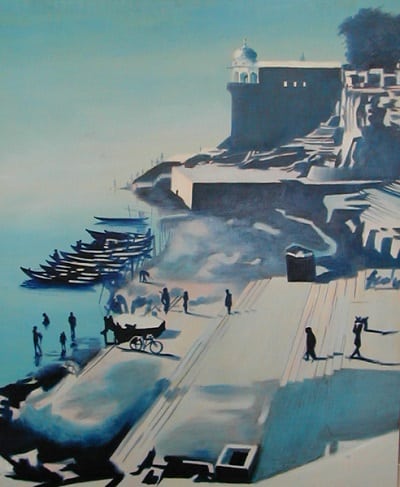 Some pieces are inspired from statues, such as those in Khajuraho. “I wondered what the figures would have looked like if real – and the paintings became reimaginings of their life.”
Some pieces are inspired from statues, such as those in Khajuraho. “I wondered what the figures would have looked like if real – and the paintings became reimaginings of their life.”
Of course there are pieces from real life, such as the captivating silhouettes of figures on a Shantiniketan lane as dusk fell.
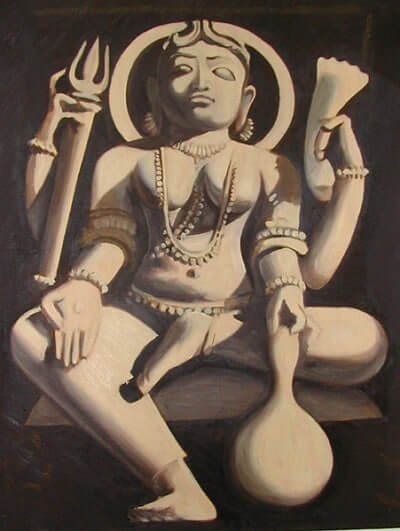
And there are paintings of structures, such as in the old city of Varanasi especially the pavilions of Chet Singh Ghat. A big old mosque in Mandu, Madhya Pradesh brings forth a gush of memories from the late ‘70s. At the background stands an ancient structure in ruins, even as a bustling market thrives on in the foreground.
“When I revisited in 2014, the market was replaced with paved areas for cars to park, and the monument itself was preserved. But the atmosphere was gone.”
It is clear that each art work is a cherished piece that take Peter back in time. They have become representations of entire episodes and experiences.
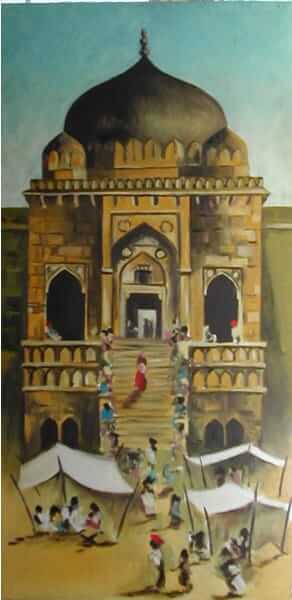
“Even today when I look at my works, I can recall where it was and who talked to me, reminding me of the mood of the place and time. Strangely, the photographs do not do that: with your camera, it is all over in an instant as you click a button and the move on.”
Perhaps the drawings stamp in an additional motor memory of sorts.
There’s no doubt Peter is drawn to India in more ways than one!



